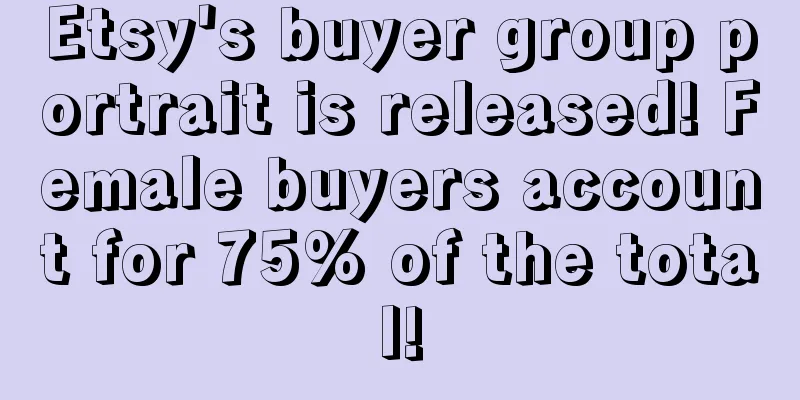What is Shopify? Shopify Review

Shopify is a Canadian e-commerce software developer founded by Tobias Lütke. Its headquarters is located in Ottawa, the capital of Canada. The service software Shopify provides is a shopping cart system in the SaaS field, which is suitable for cross-border e-commerce to establish independent websites. Users can use various themes/templates to build their own online stores by paying a certain fee. Website shopify.com Company nature Public Founder Tobias Lütke Headquarters Ottawa Ontario Service area WorldwideintroduceShopify can provide sellers with complete e-commerce solutions, helping users quickly build their own online stores, and providing a full range of services including website security, page design, sales data statistics, etc. Store opening informationTo open a store on Shopify, you only need a credit card and an email address (do not use domestic email addresses such as QQ, 163, etc., as your account will be blocked immediately after registration. Use hotmail, outlook, gmail, yahoo or corporate email) and that's it. If you have a domain name, you can use it. If you don't have a domain name, you can directly register one in the Shopify backend. It's very simple. Instructions for useNo review required: No qualification information needs to be submitted, you can use it after registration. Sell any product: Shopify does not restrict any products. You can sell any product you want as long as it does not break the law. Production quantity: Shopify does not limit the number of products. Even if you have tens of millions of products, you can upload them. There is no limit on space or pictures. In short, there is no limit and you can use it as you like. Payment Methods: PayPal allows payment via credit card, bank account, buyer's credit card or PayPal account balance. Subscription FeesHelps small and medium-sized retailers build online stores with a monthly subscription fee ranging from $29 to $179. developIn 2006, Lütke, Lake, and Weinand officially launched Shopify, a set of tools that merchants and store owners can use to build their own online stores. In 2009, Shopify released an API platform and app store. Both new products were designed to help existing Shopify merchant customers and a new group of developers. In 2010, Shopify released a free app, Shopify Mobile, which gave merchants and store owners a new way to manage online sales. Shopify Mobile was a revolutionary product because it allowed merchants to monitor their online stores, find customer information, and complete orders from their mobile phones. In 2011, Shopify has helped build more than 11,300 online stores, which have generated more than $125 million in revenue. In February 2012, Shopify acquired mobile software developer Select Start Studios Inc ("S3") and its 20 mobile engineers and designers. In August 2013, Shopify acquired Jet Cooper, a 25-person design studio based in Toronto. In August 2013, Shopify announced the launch of Shopify Payments, which allows merchants to accept credit cards without the need for a third-party payment gateway. The company also announced the launch of an iPad-centric point-of-sale system. It uses iPads to accept debit and credit card payments. In December 2013, Shopify completed a $100 million Series C financing round. On May 21, 2015, Shopify went public in the United States with a market value of US$2.14 billion. In September 2015, Amazon announced that it would shut down its Amazon Web Store service for merchants and select Shopify as its preferred immigration provider; Shopify's stock rose more than 20% on the news. On October 3, 2016, Shopify acquired Boltmade. In November 2016, Shopify partnered with Paystack to allow Nigerian online retailers to accept payments from customers around the world. On November 22, 2016, Shopify launched Frenzy, a mobile app that improves flash sales. On December 5, 2016, Shopify acquired Tiny Hearts, a mobile product development studio based in Toronto. The Tiny Hearts building has been turned into the Shopify R&D office. In January 2017, Shopify announced its merger with Amazon, allowing merchants to sell products to Amazon from their Shopify stores. In April 2017, Shopify launched a Bluetooth-enabled debit and credit card reader for purchases in physical stores and retail outlets. In July 2017, Shopify announced a partnership with eBay to sell goods on the platform. In April 2018, Shopify announced a partnership with Deliv to provide same-day delivery services to Shopify retailers. |
<<: What is Shopee? Shopee Review
Recommend
What is HiSea? HiSea Review
HiSea is a new brand upgraded from Lazada, a local...
Sellers complain about Amazon’s “unfair operations”: new products are directly “hidden”!
Recently, there has been an uproar in the Amazon s...
How can a beginner do cross-border e-commerce? Eight core points will help you win the market!
To start cross-border e-commerce, you must go thro...
How to evaluate the investment in products when the budget is limited? How to formulate a reasonable promotion plan after setting the goal? Under what circumstances should we stop losses in time?
Anonymous user My C position I am a small, pure wh...
What is Haiquan.com? Haiquan.com Review
Haiquan.com is a community focused on cross-border...
USPS holiday package volume dropped by 1 billion pieces year-on-year! Suspected of being hit by supply chain!
The United States Postal Service (USPS) expects to...
What is AlipayHK? AlipayHK Review
AlipayHK is a mobile payment, electronic transfer ...
What is Backsty? Backsty Review
Backsty APP is one of the tools commonly used by E...
Here are the 4 most deceptive product selection methods for Amazon. Which ones have you used?
text Here is a comprehensive review of the most d...
What is Social Media Promo Code? Social Media Promo Code Review
Social Media Promo Code is a new form of promotion...
What is Jungle Hustle? Jungle Hustle Review
Jungle Hustle is an online service website that ma...
What is Chuangmeng Cross-border? Chuangmeng Cross-border Review
Chuangmeng Cross-border, headquartered in Shenzhen...
Musk sued for refusing to pay Twitter rent? Employees bring their own paper to work?
Musk sued for refusing to pay Twitter office rent ...
The latest data for 2023! Top 20 shopping websites with the largest traffic in the United States
According to the monthly traffic statistics releas...
What is amzpecty? amzpecty review
amzpecty is a low-cost Amazon product selection to...









